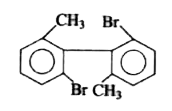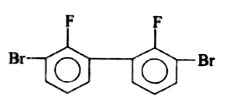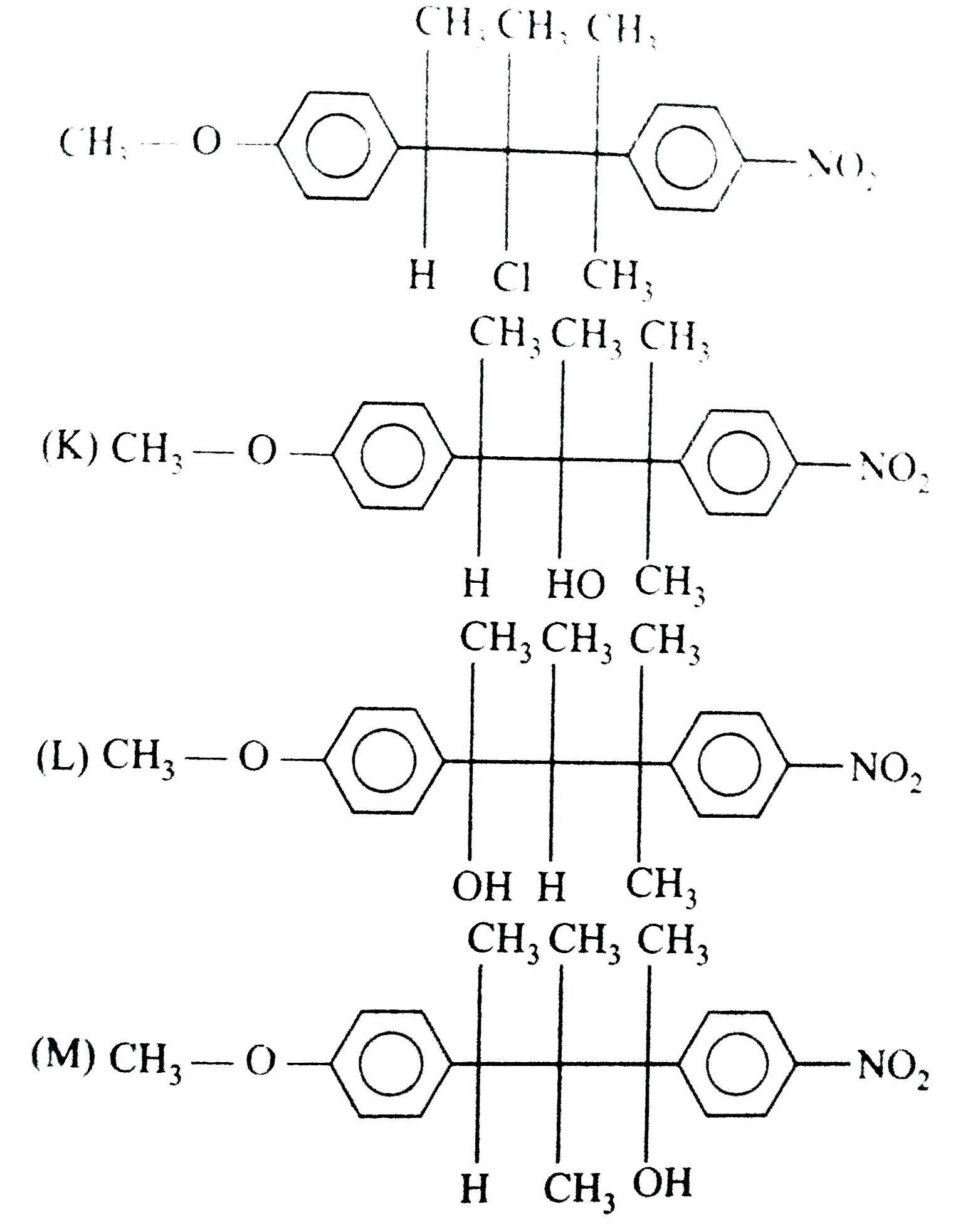Cyanohydrin of the following compound on hydrolysis gives optically active product:
HCHO
CH3CHO
CH3COCH3
All the above
The correct Answer is:B
To solve the question regarding which cyanohydrin of the given compounds yields an optically active product upon hydrolysis, we need to analyze each compound step by step.
1. Identify the Compounds: The question mentions that we need to analyze the cyanohydrin formation from three different compounds: formaldehyde (HCHO), acetaldehyde (CH3CHO), and acetone (CH3COCH3).
2. Cyanohydrin Formation:
- Formaldehyde (HCHO):
- Reaction with HCN:
HCHO+HCN→H2C(OH)(CN)
- Upon hydrolysis, this cyanohydrin yields:
H2C(OH)(CN)+H2O→HCOOH+NH3
- The product is formic acid (HCOOH), which is not optically active because it does not have a chiral center (two hydrogen atoms are identical).
- Acetaldehyde (CH3CHO):
- Reaction with HCN:
CH3CHO+HCN→CH3C(OH)(CN)
- Upon hydrolysis, this cyanohydrin yields:
CH3C(OH)(CN)+H2O→CH3COOH+NH3
- The product is lactic acid (CH3COOH), which is optically active because it has a chiral center (the carbon bearing the hydroxyl group has four different groups attached: CH3, OH, COOH, and H).
- Acetone (CH3COCH3):
- Reaction with HCN:
CH3COCH3+HCN→CH3C(OH)(CN)CH3
- Upon hydrolysis, this cyanohydrin yields:
CH3C(OH)(CN)CH3+H2O→CH3COOH+CH3NH2
- The product is still not optically active because the carbon with the hydroxyl group is attached to two identical methyl groups (CH3), hence no chiral center is formed.
3. Conclusion:
- The only compound that produces an optically active product upon hydrolysis is acetaldehyde (CH3CHO), which yields lactic acid.
Final Answer:
The cyanohydrin of acetaldehyde (CH3CHO) on hydrolysis gives an optically active product.
- Formaldehyde (HCHO):
- Reaction with HCN:
HCHO+HCN→H2C(OH)(CN)
- Upon hydrolysis, this cyanohydrin yields:
H2C(OH)(CN)+H2O→HCOOH+NH3
- The product is formic acid (HCOOH), which is not optically active because it does not have a chiral center (two hydrogen atoms are identical).
- Reaction with HCN:
CH3CHO+HCN→CH3C(OH)(CN)
- Upon hydrolysis, this cyanohydrin yields:
CH3C(OH)(CN)+H2O→CH3COOH+NH3
- The product is lactic acid (CH3COOH), which is optically active because it has a chiral center (the carbon bearing the hydroxyl group has four different groups attached: CH3, OH, COOH, and H).
- Reaction with HCN:
CH3COCH3+HCN→CH3C(OH)(CN)CH3
- Upon hydrolysis, this cyanohydrin yields:
CH3C(OH)(CN)CH3+H2O→CH3COOH+CH3NH2
- The product is still not optically active because the carbon with the hydroxyl group is attached to two identical methyl groups (CH3), hence no chiral center is formed.
- The only compound that produces an optically active product upon hydrolysis is acetaldehyde (CH3CHO), which yields lactic acid.
The cyanohydrin of acetaldehyde (CH3CHO) on hydrolysis gives an optically active product.
Topper's Solved these Questions
- ALKENE, ALKANE & ALKYNE BOOK - ALLENCHAPTER - ALKENE, ALKANE & ALKYNE EXERCISE - EXERCISE-2
103 Videos
- ALKENE, ALKANE & ALKYNE BOOK - ALLENCHAPTER - ALKENE, ALKANE & ALKYNE EXERCISE - EXERCISE-3
99 Videos
- ALKENE, ALKANE & ALKYNE BOOK - ALLENCHAPTER - ALKENE, ALKANE & ALKYNE EXERCISE - EXCERSISE-3
28 Videos
- AIIMS 2019BOOK - ALLENCHAPTER - AIIMS 2019EXERCISE - CHEMISTRY
40 Videos
- ALKYL AND ARYL HALIDEBOOK - ALLENCHAPTER - ALKYL AND ARYL HALIDEEXERCISE - EXERCISE-05 (B)
35 Videos
Similar Questions
Knowledge Check

Which of the following compound on hydrolysis gives reactant (A):A B
B C
C D
D
An optically active compound
Arotates the plane of polarised lightBchanges the direction of polarised lightCdoes not allow plane polarised light to pass throughDnone of these.Which of the following compounds will be optically active?
A B
B C
C D
D
An optically active compound
View SolutionWhich of the following compounds is expected to be optically active ?
View SolutionThe following compound on hydrolysis in aqueous acetone will give .

View SolutionWhich of the following compounds on basic hydrolysis will gives formaldehyde ?
View SolutionWhich of the following compound on hydrolysis followed byheating gives a product, which gives positive iodoform test?
View Solution
